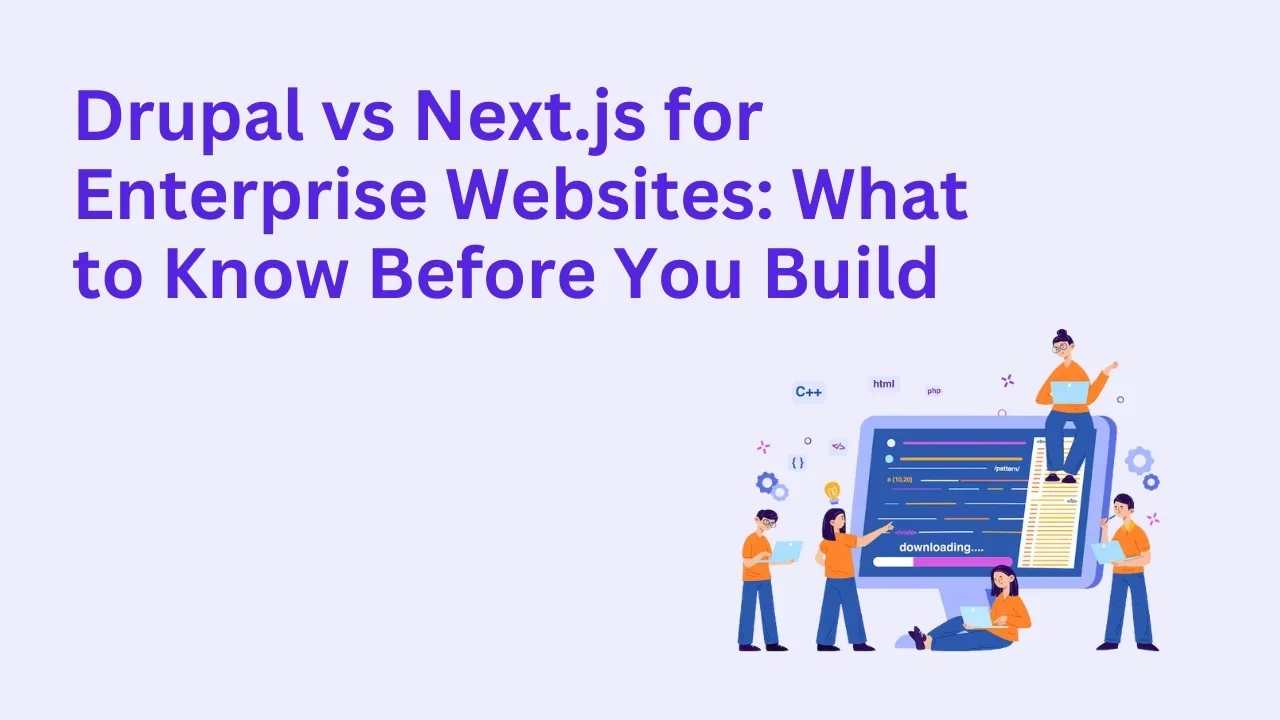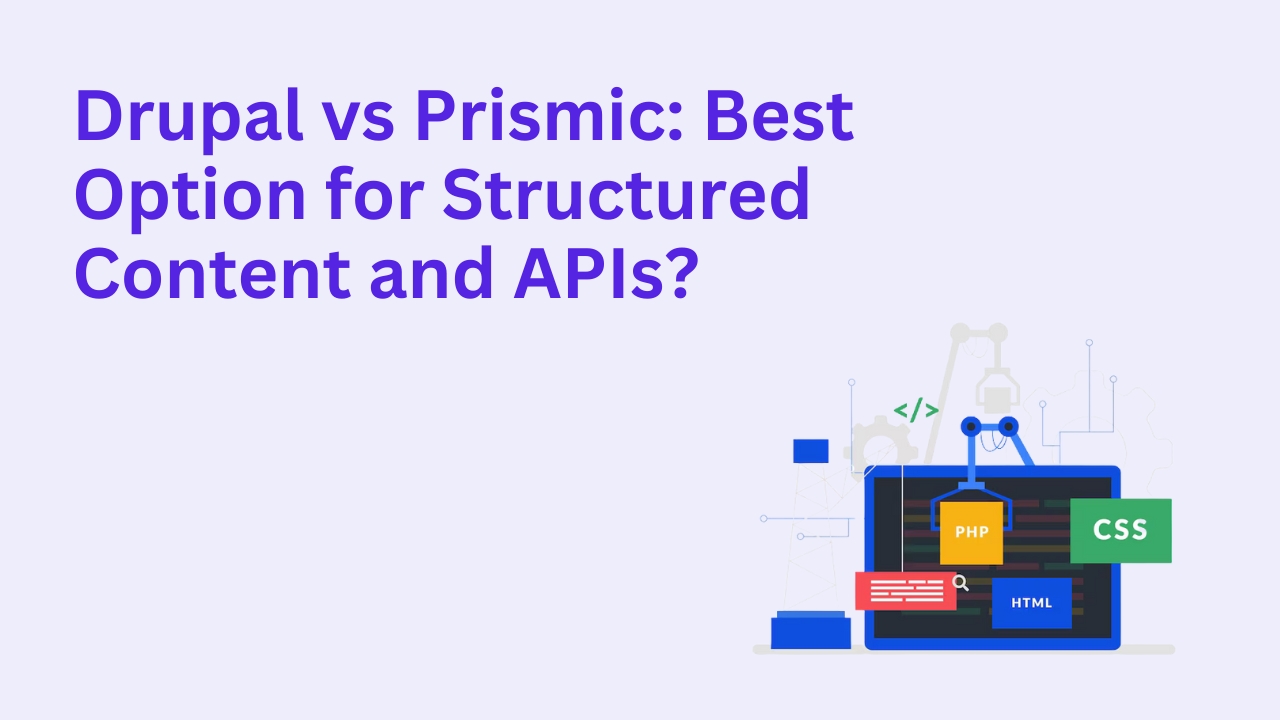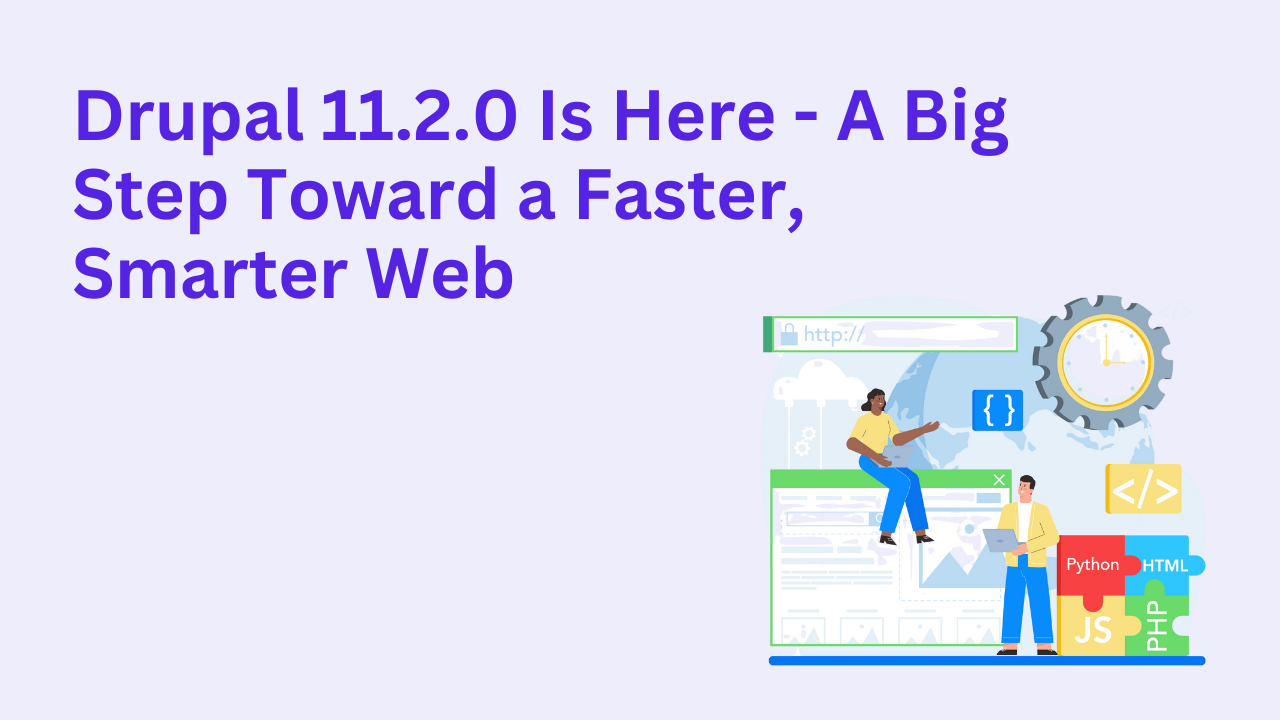Drupal vs Next.js for Enterprise Websites: What to Know Before You Build

Choosing the right technology stack for an enterprise website is more than a technical decision — it's a strategic one. In 2025, two powerful options often compared are Drupal, a robust open-source CMS, and Next.js, a leading React-based framework for building fast, dynamic web apps.
So, how do you know which one is right for your enterprise needs? Let’s break it down.
What Is Drupal?
Drupal is an enterprise-grade, open-source content management system known for its flexibility, security, and scalability. It powers some of the world’s most content-heavy and complex websites, from government portals to multinational organizations.
Key strengths of Drupal include:
Advanced content modeling and editorial workflows
Strong multilingual and accessibility support
Built-in user roles and permissions
Large ecosystem of modules for customization
For enterprises with complex content structures, compliance needs, or multilingual demands, Drupal is often a go-to solution.
What Is Next.js?
Next.js is a React framework used to build fast, modern, JavaScript-driven websites. It’s especially popular among developers who want more control over the frontend experience. With features like server-side rendering, static site generation, and seamless API integration, it’s ideal for performance-driven and interactive websites.
Highlights of Next.js:
Developer-first approach with full control of frontend
Built-in performance optimizations
Easily integrates with headless CMS backends
Flexible deployment through platforms like Vercel
Next.js is great when you're looking for fast interactivity and you have the resources to manage your own content infrastructure or connect to a headless CMS.
Headless Drupal: The Best of Both Worlds?
Here’s where things get interesting — you don’t have to choose.
Many enterprises are using Drupal as a headless CMS and pairing it with Next.js for the frontend. This hybrid approach lets teams benefit from Drupal’s powerful content governance while enjoying the speed and flexibility of Next.js.
Want to explore how we can architect this for your brand? Book a consultation to talk directly with our Drupal specialists.
When to Choose Drupal
Choose Drupal when:
Your business needs editorial workflows, roles, and permission control
You operate in multiple languages or regions
Compliance and data privacy are a priority
Your team prefers a CMS-managed backend with easy content authoring
When to Choose Next.js
Choose Next.js when:
Your team is JavaScript-heavy and wants control over frontend UX
Performance and Lighthouse scores are critical to your KPIs
You want to build a highly interactive app-like experience
You already use or plan to use a headless CMS
The Real Question: Who Manages the Complexity?
Next.js gives you power, but that power comes with responsibility. You'll need to build or integrate a backend and maintain infrastructure. Drupal, on the other hand, handles much of this out of the box, especially for content-heavy sites.
For many enterprise clients, the most effective route is partnering with a team that can tailor the architecture to your goals. Whether you're looking to build from scratch or re-platform, we help companies evaluate and implement the best-fit stack.
Let’s Help You Decide
We’ve helped global teams choose between Drupal and modern JavaScript frameworks like Next.js — or integrate the two — based on real business needs.
If you’re unsure which path will deliver better ROI, reach out to our team for personalized guidance through our contact page.








